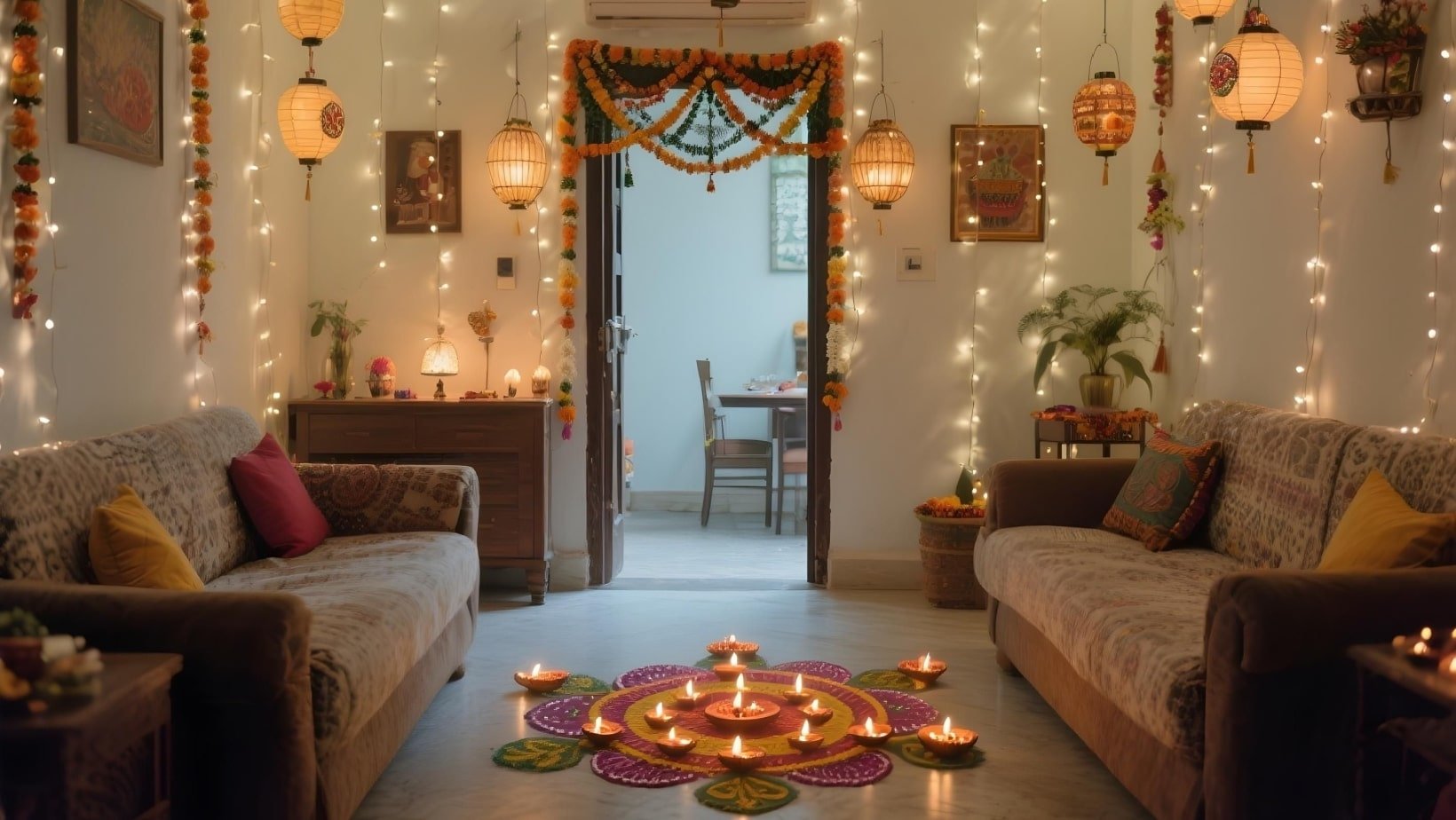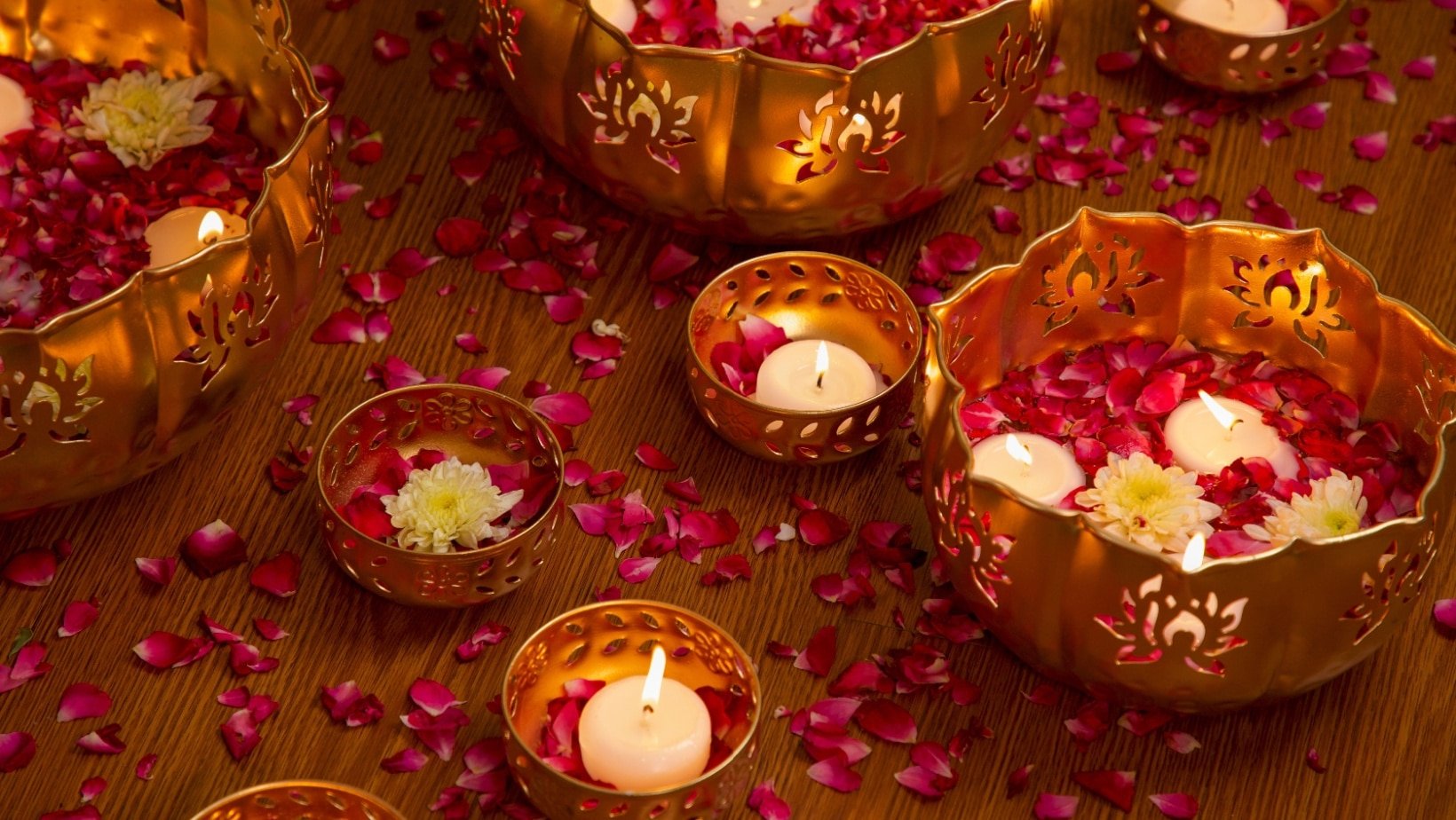Scientists and storytellers alike agree—Diwali’s glow is more than symbolic, it measurably lifts moods, strengthens communities, and connects cultures worldwide.
As autumn nights grow longer, a glow begins to spread across neighborhoods and cities where Diwali is celebrated. Tiny clay lamps flicker in courtyards, strings of fairy lights twinkle on balconies, and candles shine in windows. To those who celebrate, light is not just decoration. It is the very heart of Diwali. The festival’s stories, its rituals, and its atmosphere all center on the triumph of light over darkness. Yet light is more than a symbol. Science shows us it shapes our health, our emotions, and our communities. Diwali is a rare moment where culture and science meet in shared celebration of light.
The Ancient Stories Behind the Light
The roots of Diwali are woven into several myths and traditions. In one of the most beloved stories, Lord Rama returns to Ayodhya after defeating the demon king Ravana. The people welcome him by lighting lamps to guide his way home. In another story, Goddess Lakshmi, who represents prosperity, is invited into homes lit brightly to honor her presence. Still other traditions link Diwali to the return of the Pandavas in the Mahabharata or the defeat of Narakasura.
Though the details differ, the common theme is clear. Light represents goodness, renewal, and hope. Every lamp lit during Diwali is a continuation of these ancient beliefs, passed through generations as a way to remind families that even in the darkest times, light will return.
Light as a Universal Symbol

Diwali is unique in its scale, but the symbolism of light is shared across many cultures. In Christianity, candles represent faith and the presence of the divine. In Judaism, Hanukkah celebrates the miracle of the oil that kept lamps burning for eight nights. In Buddhism, lantern festivals mark enlightenment. Across the world, humans have turned to light as a symbol of hope and renewal.
Part of this universality comes from the simple human experience of night and day. Darkness can bring fear, uncertainty, or danger, while light allows safety, growth, and clarity. By choosing to light lamps, communities across history have reinforced the idea that light is not just physical but also spiritual.
How Light Shapes the Brain
Modern science shows that light does more than inspire. It directly affects our biology. The human body follows a circadian rhythm, a natural 24-hour cycle regulated by exposure to light and darkness. When the eyes detect daylight, signals travel to the brain, suppressing melatonin and keeping us alert. At night, darkness triggers melatonin release, preparing the body for rest.
Diwali disrupts this cycle in a joyous way. The glow of diyas and electric lights adds brightness to long nights, lifting moods and increasing alertness. Studies have shown that exposure to light can reduce symptoms of seasonal affective disorder, a type of depression linked to darker winter months. This may help explain why Diwali feels uplifting. The extra light literally improves mental well-being.
You might also want to read: Why Diwali Is No Longer Just India’s Festival of Lights—it’s the World’s
The Warmth of Firelight
Not all light is the same. The soft golden glow of diyas and candles differs from the sharp white of LEDs. Firelight contains more red and yellow wavelengths, which feel comforting to the eyes and nervous system. Anthropologists suggest that humans have evolved to feel safe around firelight, since it once signaled warmth and protection.
When families gather around rows of flickering diyas, they are not only honoring tradition but also tapping into a deep evolutionary comfort. The gentle flames slow heart rates and create calm, while the shared glow strengthens the sense of community.
Light and Social Connection
Beyond individual biology, light shapes how people connect. Brightly lit spaces encourage social activity, while dark spaces can feel isolating. During Diwali, homes, streets, and entire cities burst into light. This transformation of public and private spaces invites people out of solitude and into community. Neighbors visit one another, children play outside later into the night, and families gather for long evenings of food and laughter.
The science of social psychology confirms what Diwali has long practiced. Light encourages human interaction, cooperation, and shared joy. When entire neighborhoods glow together, bonds are strengthened in ways that carry long after the festival ends.
The Energy of Color
While light is central, the colors of that light also matter. Rangolis glow with vivid powders, lamps are often decorated with bright paints, and fireworks add bursts of red, green, and blue to the night sky. Color psychology suggests that different hues evoke different emotions. Red sparks energy and excitement, yellow brings cheerfulness, green signals renewal, and blue calms.
During Diwali, the mixture of these colors creates a full spectrum of emotional stimulation. It is a feast for the senses, designed not only to honor deities but also to uplift human spirits in every shade of light.
The Balance of Light and Dark
While Diwali celebrates light, it also acknowledges the presence of darkness. Without night, the lamps would not glow so brightly. In this sense, the festival teaches balance. Darkness is not simply an enemy to banish but a backdrop that allows the beauty of light to shine.
This balance reflects a deeper truth found in many philosophies. Life contains both sorrow and joy, struggle and triumph. The power of light lies not in eliminating darkness but in showing that it can be overcome. Every diya lit during Diwali is a small act of resilience, a declaration that hope remains.
Technology and Modern Light

Today, electric lights and LED decorations join traditional diyas. Some families use strings of solar lights to reduce energy use, while others create elaborate displays with smart technology. Cities organize light shows that combine tradition with innovation. These additions demonstrate how Diwali continues to evolve while keeping its essence intact.
Science also shows that modern artificial light has both benefits and risks. While it allows creativity and spectacle, excessive exposure late at night can disrupt sleep patterns. Many families strike a balance, blending the soft glow of diyas with the sparkle of electric lights. In doing so, they honor both tradition and modern life.
A Global Festival of Light
For those in the Indian diaspora, lighting lamps is a way to feel connected across distance. In places like London, New York, and Singapore, public Diwali festivals often include massive light displays. These are not just cultural celebrations but public affirmations of diversity and unity. Non-Hindus often join in, drawn to the universal appeal of light.
Science supports what these celebrations reveal: light is universally uplifting, regardless of culture or religion. It speaks to a shared human experience of seeking hope and joy.
The Lasting Power of Light
When the final diya burns low and the sweets are finished, the glow of Diwali lingers. Families recall the warmth of being together, the calm of flickering flames, and the energy of vibrant lights. Science explains part of this lingering effect. Exposure to bright and warm light creates lasting impressions on mood and memory. Spiritually, it reminds people that light always returns, no matter how dark the night.
Diwali endures because it weaves together myth and science, culture and psychology. It is both ancient and modern, both symbolic and tangible. The lamps that shine in windows and courtyards each year are more than ritual. They are a testament to resilience, connection, and joy.
The lesson of Diwali is simple but profound. Light has the power to transform. It can shift the mind, heal the spirit, and bring people together. In every diya, every candle, and every spark, that truth shines brightly.






